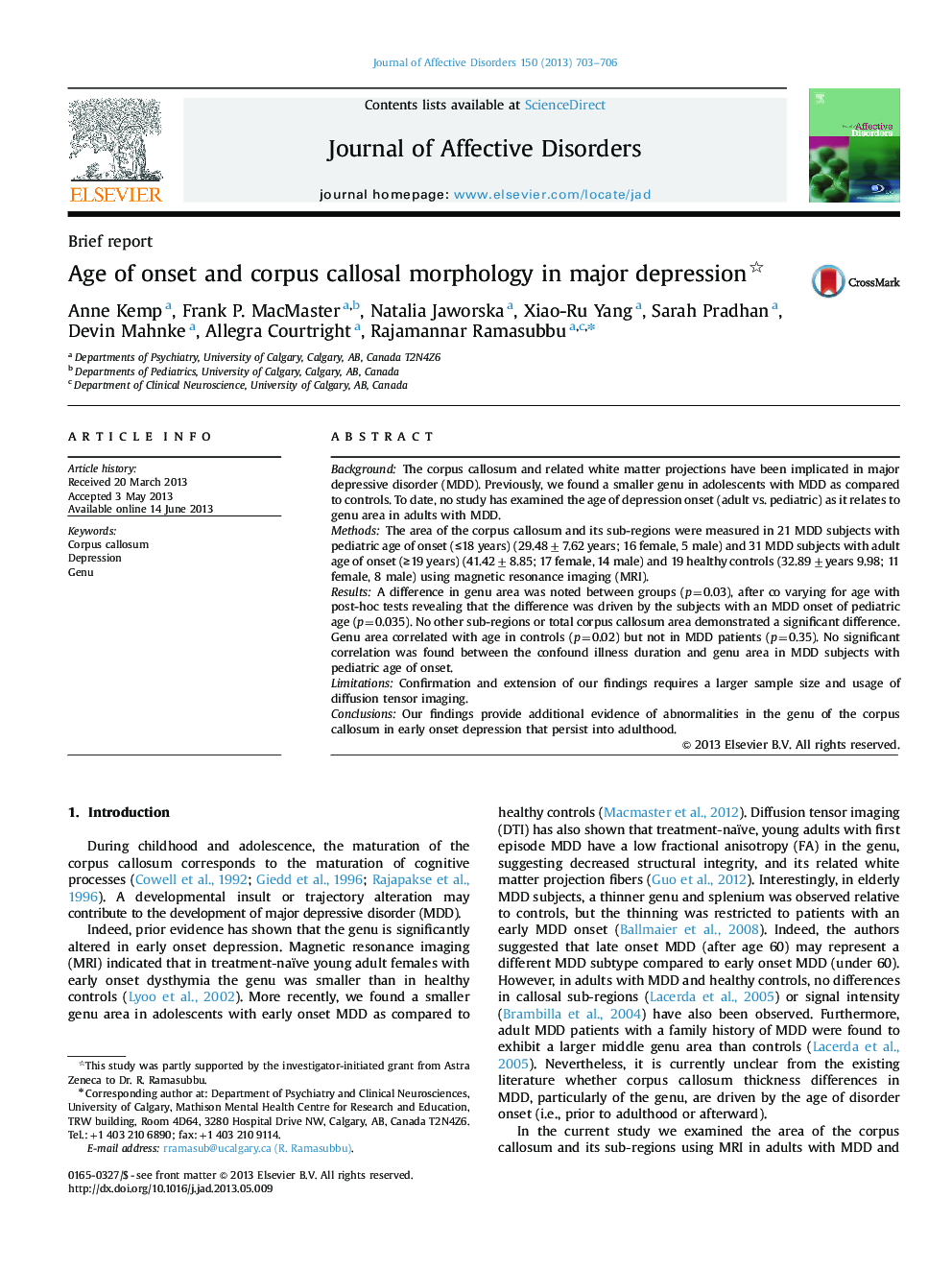| Article ID | Journal | Published Year | Pages | File Type |
|---|---|---|---|---|
| 6234406 | Journal of Affective Disorders | 2013 | 4 Pages |
BackgroundThe corpus callosum and related white matter projections have been implicated in major depressive disorder (MDD). Previously, we found a smaller genu in adolescents with MDD as compared to controls. To date, no study has examined the age of depression onset (adult vs. pediatric) as it relates to genu area in adults with MDD.MethodsThe area of the corpus callosum and its sub-regions were measured in 21 MDD subjects with pediatric age of onset (â¤18 years) (29.48±7.62 years; 16 female, 5 male) and 31 MDD subjects with adult age of onset (â¥19 years) (41.42±8.85; 17 female, 14 male) and 19 healthy controls (32.89±years 9.98; 11 female, 8 male) using magnetic resonance imaging (MRI).ResultsA difference in genu area was noted between groups (p=0.03), after co varying for age with post-hoc tests revealing that the difference was driven by the subjects with an MDD onset of pediatric age (p=0.035). No other sub-regions or total corpus callosum area demonstrated a significant difference. Genu area correlated with age in controls (p=0.02) but not in MDD patients (p=0.35). No significant correlation was found between the confound illness duration and genu area in MDD subjects with pediatric age of onset.LimitationsConfirmation and extension of our findings requires a larger sample size and usage of diffusion tensor imaging.ConclusionsOur findings provide additional evidence of abnormalities in the genu of the corpus callosum in early onset depression that persist into adulthood.
